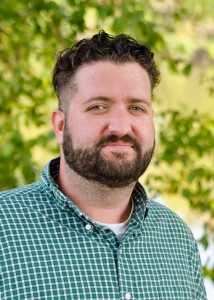Meet our alumni:
Jack Heide — Resiliency Manager, Sustainable Jersey
What Community Service Center program(s) did you work with?
Community Planning Workshop (CPW)
Oregon Partnership for Disaster Resilience (OPDR)
What year(s) were you affiliated with the Community Service Center (CSC)?
20011 – 2013
What do you do in your current job/position?
I serve as a Resiliency Manager with the Sustainable Jersey Resilience Program. In this capacity, I work with Superstorm Sandy-affected communities across South Jersey connecting municipal leaders with long-term recovery and resiliency planning resources and technical assistance. In addition, I have been working as part of team creating a Coastal Vulnerability Assessment (CVA) targeted for New Jersey municipalities and piloting the CVA through facilitation in 30 New Jersey towns. The CVA is community asset based vulnerability that measures the vulnerability of community assets against projected sea level rise at 2030, 2050, and 2100 and CAT 1 Hurricane events on the same time horizons. Finally the CVA takes the vulnerabilities of each asset and considers them against the risk to the entire community. I’m working on several multi-stakeholder grant programs (through NOAA and NFWF) providing assistance to New Jersey municipalities to provide ecological-based approaches to hazard mitigation. The ecological solutions focus on green infrastructure and living shoreline practices.
Tell us about an unforgettable day in your current job…
I spent a day (8 hours) touring Greenwich, NJ with citizens of the town as they showed me areas of the town still not recovered from Superstorm Sandy, which occurred in 2012. In addition, my guides took me to explore the vast marshlands which contain an intricate system of dikes, levees, culverts, and pumps that help protect the town from future storm events and flooding. The greatest part of the day was the fact that they invited me to bring my dog, who helped explore the complexity and marshlands in this historic town along the Delaware Bays Shore.
What professional organizations do you belong to?
Natural Hazards Mitigation Association
American Society of Adaptation Professionals
The Association of State Floodplain Managers
New Jersey Association of Floodplain Management
What advice would you give someone just entering this field?
Resilience planning is still a new and evolving field within land use planning. One must maintain an open mind and be flexible about what constitutes resilience. Build a solid foundation in public participation and meeting facilitation because to push forward in this field you will be called on often to convince the general public and local government officials, who are often reluctant or pessimistic, that resilience is a worthwhile ideal for community’s to strive for.

